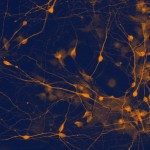Link to Pubmed [PMID] – 18987187
J. Neurosci. 2008 Nov;28(45):11511-6
New interneurons are continually added to the olfactory bulb (OB), the first central relay for processing olfactory information, throughout life. It remains unknown how these adult-generated interneurons integrate into preexisting networks or die. We used immunohistochemical approaches to quantify adult neurogenesis in mice subjected to olfactory training. We identified a critical period in the life of an adult-generated OB interneuron, during which learning triggers distinct consequences. Using a discrimination learning task performed at various times after the birth of new interneurons, we found that olfactory training could increase, decrease, or have no effect on the number of surviving newly generated neurons. Cell survival and elimination depend on both the age of the cell and its location within the granule cell layer. This study provides new insight into the contribution of the newly generated interneurons to OB function. It demonstrates that neuronal elimination is an active process, rather than a simple consequence of nonuse.




